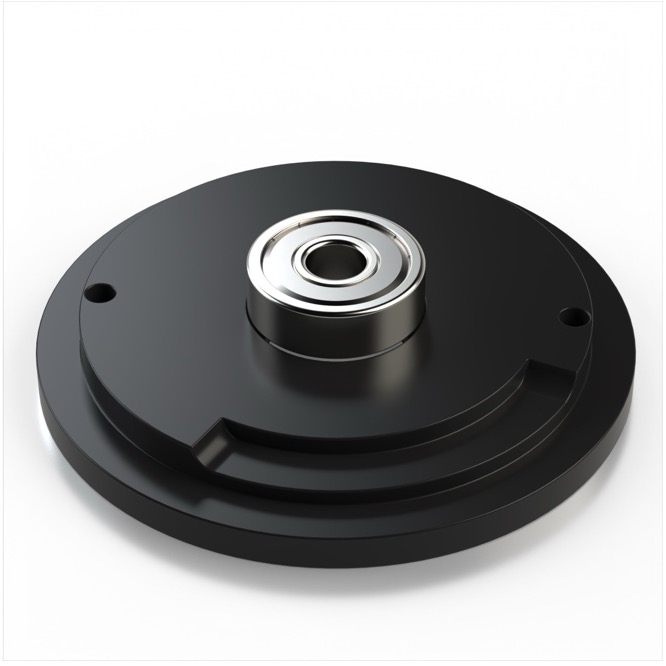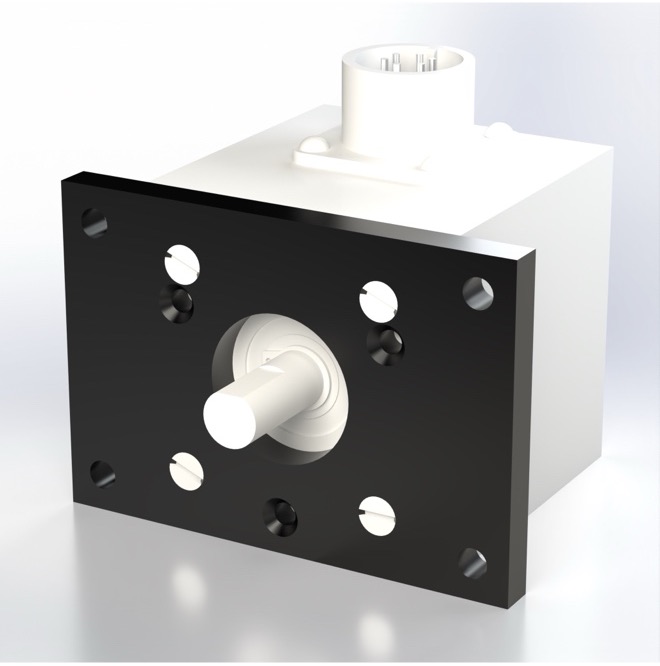We use cookies to make your experience better. To comply with the new e-Privacy directive, we need to ask for your consent to set the cookies. Learn more.
Extend Encoder Life with Proper Encoder Mounting
Extend Encoder Life with Proper Encoder Mounting
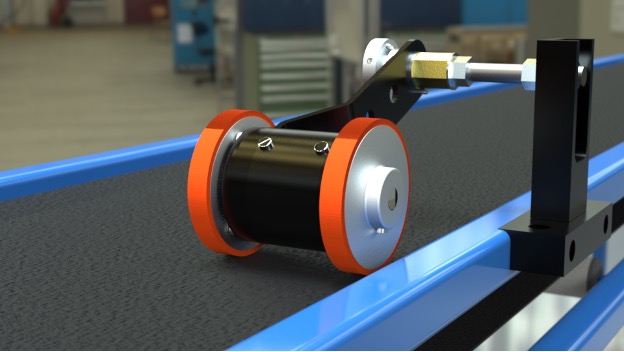
Encoders are essential components in many industrial applications, providing precise feedback on position, speed, and direction of motion. However, like any other mechanical device, encoders are subject to wear and tear, which can lead to decreased accuracy and even failure over time.
One of the most critical factors in ensuring the longevity and accuracy of an encoder is proper mounting. Some encoders simply need to be aligned with a motor shaft, while others must be cleverly positioned in a way that minimizes the effects of environmental interference. Although easily overlooked, encoder mounting devices play a key role in maximizing performance and longevity of encoders in all applications. In this article, we will discuss the importance of proper encoder mounting techniques and how they can extend the life of your encoder.
Why is Proper Encoder Mounting Important?
Even the best quality encoders on the market rely on precise placement and compatible mounting accessories to reliably deliver the most accurate positional data. Here are three reasons why proper encoder mounting is key to getting the best performance out of your device:
Prevents Misalignment
One of the most common causes of encoder failure is misalignment. When an encoder is not mounted correctly, it can cause the shaft to be misaligned with the encoder's internal components, leading to inaccurate readings and potential damage.
Proper encoder mounting techniques ensure that the encoder is securely attached to the motor or machine shaft, preventing any misalignment that could affect its performance.
Reduces Vibration
Vibration is another common cause of encoder failure. When an encoder is not mounted correctly, it can cause excessive vibration, which can damage the encoder's internal components and lead to inaccurate readings.
Vibration can be reduced by using the proper mounting accessories, such as a rigid mounting bracket that is designed to be compatible with your specific encoder model. This can extend the life of the encoder and facilitate improved data accuracy.
Protects Against Environmental Factors
Encoders are often used in harsh industrial environments, where they are exposed to dust, moisture, and other contaminants. Improper mounting can leave the encoder vulnerable to these elements, leading to damage and failure.
To protect the encoder from these environmental factors, proper encoder mounting techniques such as using a sealed mounting bracket can and extend its life.
Common Encoder Mounting Mistakes to Avoid
Even with the right accessories, encoder mounting can present its own unique set of challenges. The following are some of the most common challenges that users face in regard to encoder mounting:
Using the Wrong Mounting Bracket
A common issue in encoder mounting is using a bracket that’s great when used in the right application, but simply not compatible with the encoder at hand. Using the wrong mounting bracket like this can lead to misalignment, vibration, and other issues that can affect the accuracy and longevity of the encoder. When choosing a mounting bracket, make sure it is made of a sturdy material, such as aluminum or stainless steel, and is designed to fit your specific encoder model.
Not Checking Alignment Periodically
Proper alignment is key to ensuring the accuracy and longevity of a wheel or rotation encoder, but it’s not the kind of parameter where you can just set it and forget it. Even slight adjustments or an accidental shock can knock an encoder out of alignment. Checking the alignment of the encoder periodically is essential to maximizing encoder performance, especially after any maintenance or repairs that may have affected its position.
Insufficient Torque Support
Closely tied to the above encoder mounting mistakes is insufficient torque support. When not mounted properly, encoders can experience excessive torque from the source of motion. Excess torque may subject the encoder to unnecessary wear in the short term, but as the issue persists it can cause further problems like misalignment and subsequent vibrations.
Over-Tightening the Mounting Screws
Over-tightening the mounting screws can cause excessive stress on the encoder's housing, leading to damage and failure. Always follow the manufacturer's recommended torque specifications when tightening the mounting screws.
If you are unsure of the recommended torque, it is best to err on the side of caution and tighten the screws just enough to secure the encoder in place. Remember, the screws can always be tightened again later as part of the encoder's maintenance routine.
Not Using a Sealed Mounting Bracket
Not using a sealed mounting bracket can leave the encoder vulnerable to dust, moisture, and other contaminants, which can cause damage and failure. Consider using a sealed mounting bracket, especially if the encoder will be operating in harsh industrial environments.
If you’re struggling with encoder performance, it may be a mounting issue. Tri-Tronics will help you get to the bottom of it, so contact us today!
Contact Us
Considerations for Proper Encoder Mounting
Choose the Right Bracket & Coupling Accessories
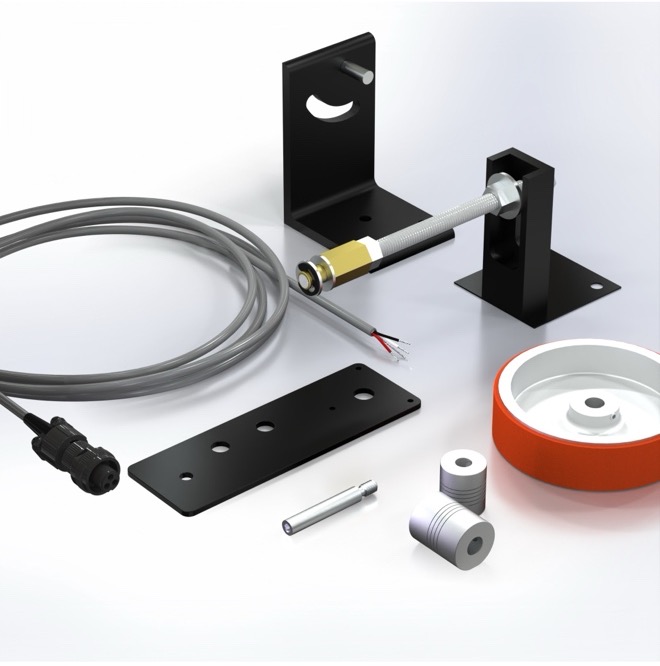 One of the easiest ways to mitigate damage to your encoder is to choose a mounting bracket that is specifically designed for your encoder model. The right encoder mounting device should allow for proper positioning to minimize environmental interference while also providing the appropriate level of flexibility or rigidity for the encoding application.
One of the easiest ways to mitigate damage to your encoder is to choose a mounting bracket that is specifically designed for your encoder model. The right encoder mounting device should allow for proper positioning to minimize environmental interference while also providing the appropriate level of flexibility or rigidity for the encoding application.
In the case of a shaft encoder or hollow shaft encoder, a rigid mounting device will be the most suitable for keeping the encoder in its place. However, in a wheel encoder used on a conveyor belt, a more flexible coupling accessory would be an appropriate add-on to ensure that the encoder can maintain contact with the target surface despite any bumps or volatile movements. A flexible coupling can help reduce vibration and misalignment, extending the life of the encoder. When choosing a flexible coupling, make sure it is compatible with your encoder and motor or machine shaft. The lifespan of the coupling may not be a 1:1 fit with the encoder itself, so be sure to regularly check the coupling for wear and tear and replace it if necessary.
Ensure Proper Alignment
Proper alignment is another way to increase the positional accuracy and longevity of an encoder. Alignment and centering can prevent uneven wear on encoder wheels and internal bearings, although the method of alignment will differ depending on the type of encoder.
In the case of rotary shaft encoders, the shaft of the encoder must be properly aligned with the rotating shaft of the motor. Incorrect alignment between the two can result in reduced precision and reliability in the positional data returned by the encoder. This issue can sometimes be eliminated with the use of a hollow shaft rotary encoder, although the system must be able to accommodate a hollow shaft encoder in order to do so.
Wheel encoder alignment is more like aligning a wheel on a car. The wheel encoder must be mounted so that it is perpendicular to the surface, and rotates parallel to the direction of motion. Any bit of angle can result in uneven wear on the encoder wheel.
You can use a dial indicator or laser alignment tool to ensure precise alignment. It is also beneficial to check the alignment periodically as part of regular system maintenance.
Use a Sealed Mounting Bracket
As mentioned earlier, encoders are often used in harsh industrial environments, where they are exposed to dust, moisture, and other contaminants. To protect the encoder from these elements, a sealed mounting bracket can provide a barrier between the encoder and the external environment. This will prevent any contaminants from entering the encoder and causing damage, which is especially important for encoders used in outdoor or high-moisture environments.
Now that you have a better understanding of the most common encoder mounting issues and how to avoid them, you can always refer back to our quick guide of do’s and don’ts for mounting encoder devices. Feel free to download the image for future reference or share the guide with your team:
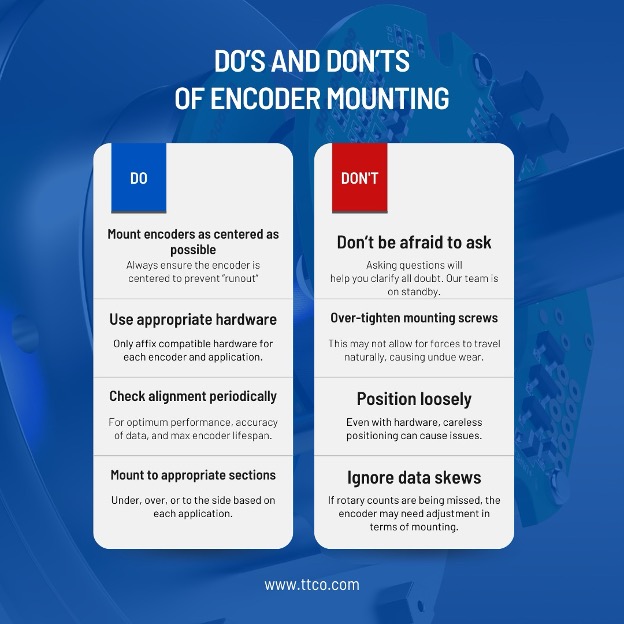
How Our Encoder Mounting Accessories Can Help
The right mounting device can prevent minutes and hours of unplanned downtime due to an encoder failure. Just think about that- a device that costs roughly $40 can result in hundreds of thousands of dollars saved by maximizing uptime and encoder performance.
Tri-Tronics' encoder mounting devices are engineered for longevity, designed for compatibility, and built to withstand the toughest environments. Our encoder mounting accessories are not only crafted in the USA with premium materials, but also optimized for easy installation to keep your operations up and running for longer.
Our Encoder Mounting Compatibility
At Tri-Tronics we make it easy to find the right encoder mounting accessory for any of our devices: take the MB-UB3 for example. Compatible with R21, R21-P, R22, R22-P, RH and RH-P encoders, MB-UB3 is ideal for mounting any of these wheel encoder devices beneath a conveyor. The pivot point allows for up and down movement of the encoder with the conveyor belt while the two springs assure constant contact of the wheels to the conveyor. For an above belt configuration, we’ve also engineered mounting accessories like our MB-UB2 to be perfectly suited for the job. To get a full look at the mounting options we have available for any particular encoder, check out our full list of encoder mounting accessories categorized by encoder model.
Encoder Mounting Adaptors
In a case where an additional adaptor is needed to mount the encoder, finding the right match is simple with our adaptor table:
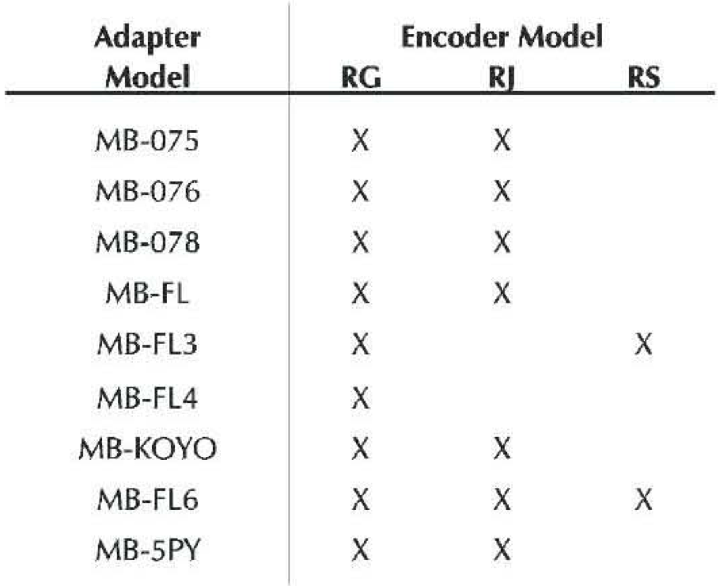
Want a second opinion on your encoder mounting configuration?
Tri-Tronics is here to help!
Contact Us
Industry Examples of Encoder Mounting Importance
Automotive Industry
In the automotive industry, encoders are used in various applications, such as engine control, transmission control, and steering systems. In these applications, proper encoder mounting is crucial to obtain accurate readings and ensure reliable performance.
For example, in engine control systems, encoders are used to measure the position and speed of the crankshaft, which is essential for fuel injection and ignition timing. If the encoder is not mounted correctly, it can lead to misalignment and inaccurate readings, affecting the engine's performance.
Manufacturing Industry
Encoders are also used in various applications in the manufacturing industry, such as CNC machines, robotics, and conveyor systems. In these applications, proper encoder mounting enables highly precise machine control and reliable performance.
For example, in CNC machines encoders are used to measure the position and speed of the cutting tool. If the encoder is not mounted correctly, it can lead to misalignment and inaccurate readings, negatively affecting the quality of the finished product.
Key Takeaways for Encoder Mounting Best Practices
Proper encoder mounting is crucial for the accuracy and longevity of an encoder. By following the proper mounting techniques and avoiding common mistakes, you can extend the life of your encoder and ensure reliable performance in your industrial applications.
Remember to use the right bracket for the encoder and application, routinely ensure proper encoder alignment, avoid over-tightening any fasteners, and consider a sealed encoder mount for more demanding environments. By taking these steps, you can protect your encoder from needless wear to maximize your operation’s uptime- and no other manufacturer makes it easier than Tri-Tronics.

